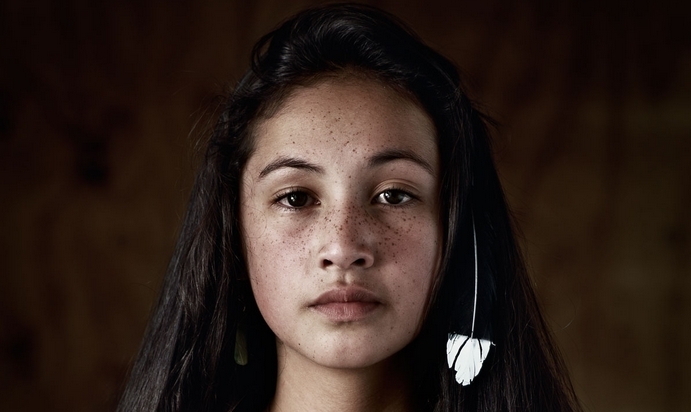Austen Layard
Occidental Observer
February 3, 2014

What happens when a forensic anthropologist is asked to identify the race of skeletal remains in a politically-charged climate where “race is a social construct”? A classic case of doublethink: simultaneously accepting two contradictory beliefs as correct. An article titled Forensic Identification of “Race” published in the journal Current Anthropology states:
The identification of the “race” of human remains by forensic anthropologists in New Zealand provides Maori with a service that is both helpful and contentious…Doing so is ethically paradoxical because the estimation of “race” implies that races exist, a concept that has been questioned and rejected by most anthropologists. (Cox et al. 2006)
The Maori are the indigenous people of New Zealand who share a similar history with Native Americans in that they were largely displaced by colonial Europeans and have since earned their valued non-Western victimhood status which is currently being used for political redress in lieu of historical grievances.
When human remains are found in New Zealand, the Maori request forensic analysis to determine whether the bones are their own ancestors or instead of European descent. This process is guided by a set of codes adopted in the New Zealand government which protect the rights of Maori to have their traditions and beliefs respected. These codes acknowledge the special significance of Maori human remains because of the Maori view that human remains retain the spirit of the deceased after death.
So anthropologists in New Zealand are in a tough spot: being asked to fulfil the wishes of a protected indigenous population by identifying the race of human remains, while at the same time their own scholarly discipline purports that race is only skin deep.
It has even been suggested that forensic anthropologists who continue to identify individuals by “race,” while meaning no harm in doing so, may be nothing more than “kind racists” simply by helping to legitimize the race concept. (Ibid)
What to do, what to do???…the scientists want to make up for historical grievances by honouring the Maori request to identify their ancestors, but by doing so they’re complicit in blemishing anthropology’s sacred doctrine of race denial.
From this it might be concluded that forensic anthropologists have an ethical obligation to decline to identify the race of physical remains, thereby educating the general public about the myth of the existence of races. (Ibid)
Thus the article moves straight past cognitive dissonance into the loony land of doublethink. In other words: “Yes, forensic anthropologists can identify the race of human bones, but we would rather educate the masses with our wonderful theory that race is a myth.” To educate is to provide with information. This statement advocates the opposite: it promotes the spreading of misinformation. This is apparently lost on the authors, who perceive no conflict in retaining in their minds two contradictory beliefs at the same time: that race is a biological reality, and that race does not exist.

Here’s another example from the same article:
The general public believes that the race concept is a biological fact rather than a cultural construct. To argue against the existence of races is to argue against the perception of the characteristics that allow discrimination among individuals. However scientifically flawed this reasoning, it is inappropriate to enter into the debate with police and family during a forensic investigation. (Ibid; italics not in original)
To clarify, these scholars are saying (presumably with a straight face) that it is scientifically flawed reasoning to accept that race is a biological fact…while simultaneously using biological facts to identify race in human bones. As if that weren’t bad enough, they are implying that the general public is too uneducated and bigoted to grasp such doublethink, but that enlightened scholars shouldn’t embarrass the poor fools by pointing out their ignorance during a time of family crisis.
The only mental conflict perceived by these scholars is the possibility that they are being insensitive to the Maori. Never mind that they just implied that the general (White) public of New Zealand are a bunch of unenlightened hayseeds.
However, because skeletal remains retain spiritual importance for Maori despite having been separated from them, in some cases, for hundreds of years, forensic anthropologists who refuse to identify “race” could be seen to be placing their own beliefs over those of an indigenous group. (Ibid)
God forbid Whites are ever perceived as putting their own interests above any other group.
The forensic anthropologist clearly has an ethical and moral responsibility to make the attempt, because to do otherwise ignores the wishes of Maori to be recognized as culturally distinct. (Ibid)
So the wishes of minority groups with victimhood status trump all other moral imperatives. How did we find ourselves in a situation where an article with so many blatant contradictions and condescending drivel is published in one of anthropology’s most prestigious peer-reviewed journals, without a shred of commentary pointing out its obvious flaws? Hopefully the sane anthropologists are just keeping their heads down, trying to weather the storm of Cultural Marxism until its political, anti-scientific dogma works its way through the system. The question is whether the discipline of anthropology can survive, or will just simply continue to degrade into meaningless post-modern banter.
Reference:
Cox, K., N. Tayles, and H. Buckley
2006 Forensic Identification of “Race”: The Issues in New Zealand. Current Anthropology 47(5):869-874.
